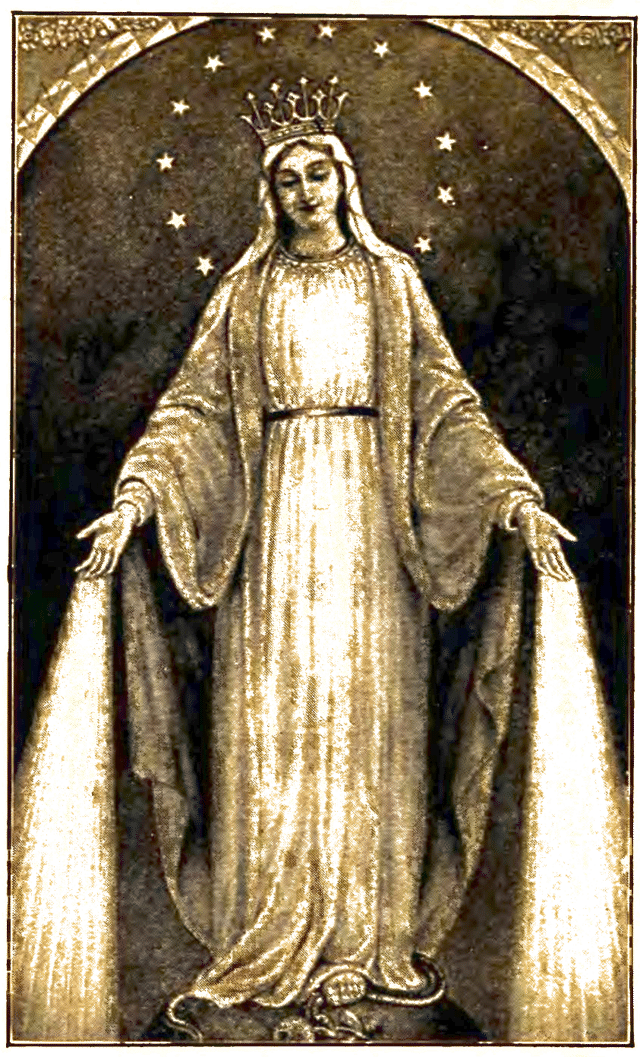May, the month of Our Lady, invites us to deepen our Marian devotion. While the rosary and scapular are familiar to many, one ancient practice, the Little Office of the Blessed Virgin Mary, has mostly faded from common use.
This devotion, a compact, Marian-focused office, small enough to fit in your pocket, follows the same daily “hours” as the traditional Divine Office (e.g. Matins, Lauds, Vespers etc) with fixed prayers and psalms, offering a rhythmic, meditative way to honour Our Blessed Mother.
The Little Office boasts remarkable antiquity, particularly in England, where it was cherished for centuries. Its brevity and daily familiarity made it accessible to the laity. Historical accounts describe mothers, little children and schoolboys chanting this office as they go about their daily duties.
Like many ancient devotions, its origin is shrouded in mystery, but by the 8th Century we have examples of offices devoted to the Blessed Virgin in both the East and the West. The Little Office entered the Benedictine tradition through the reforms of Benedict of Aniane, who added additional offices before and after the Divine Office, including that of the Blessed Virgin Mary.
Thanks to the Benedictine revival in England in the 10th Century, many churches and cathedrals adopted the customs of monasteries of the continent which included these additional offices. England’s fervent Marian piety, evident in its title as “Our Lady’s Dowry”, was the perfect kindling for the Little Office to spread.
By the 11th century, Pope Urban II mandated it as an obligatory addition to the Divine Office for clerics universally, a decree announced at the 1095 Council of Clermont alongside his call for the First Crusade. This elevated the Little Office’s status across the West, cementing its place in liturgical life.
The faithful of 13th century Paris, were said to have been drawn to the daily reciting of the Little Office in Notre Dame, finding solace in its repetitive prayers and chants, which, as one observer noted, offered “great comfort to all present”.
By the 15th century, King Henry VI, a devotee, included in the founding statutes of Eton College that the boys, upon rising and making their beds, should say the Matins of the Blessed Lady. A 1496 report by a Venetian ambassador described English women carrying rosaries and “the Office of Our Lady”, while St. John Fisher, in his funeral sermon for Lady Margaret Beaufort, mother of Henry VII, shared that she would rise every morning to say the Matins of Our Lady.
Whilst the Council of Trent lifted the clergy’s obligation to pray the Little Office on top of their breviary, “on account of the various businesses of this life”, it was the laity and some religious orders that kept the tradition alive. In England, it became a cornerstone of the primer, a vernacular prayer book for lay people. During the Reformation, these primers sustained persecuted Catholics, who clung to the Little Office as a lifeline of faith. Its prayers, often in English, offered solace amid suppression.
The Little Office experienced a revival following the 1850 restoration of the Catholic hierarchy. James Burns’ 1860 translation made it widely accessible, and Pius X’s 1911 reforms standardised the version used today.
Following the liturgical reforms after the Second Vatican Council, however, many switched to the more streamlined ‘Liturgy of the Hours’, which removed the need for a shorter office, nearly extinguishing this noble devotion by the end of the century.
It wasn’t until Pope Benedict XVI’s 2007 motu proprio, <em>Summorum Pontificum</em>, which permitted a wider use of the traditional Roman Breviary, that this devotion started to be revived once again. Today, the Little Office is available from publishers like Baronius Press, whose edition includes Gregorian chant notations. Online resources, including <a href="https://www.youtube.com/watch?v=eASGigpne1Q&list=PLR7cOUX2gl7rc5SoNvS6NrnsDf6ChWuub&index=4">YouTube tutorials</a>, teach the chants, making it easier than ever to learn, and a perfect entry point for liturgical chant.
The daily repetition, far from monotonous, fosters a meditative rhythm. As Blessed Ildefonso Schuster wrote, it draws us into “<em>the endless land where the Church, militant and pilgrim, passes, walking towards the promised fatherland</em>”.
For Catholics today, the Little Office offers a unique bridge between personal devotion and the Church’s ancient liturgy. The Little Office immerses us in psalms and hymns that exalt Mary’s role in salvation history. Its structure can be adapted to busy schedules, with many praying only morning Lauds or evening Vespers.
The Little Office has survived near extinction before; through persecution, reform and neglect. A revival in England, Our Lady’s Dowry, would be especially fitting. May is the perfect time to draw close to Mary and it is now <a href="https://www.lobvm.com/how-to/">easier than ever</a> to pick up this treasure of the Church, one that offers a timeless path to the Immaculate Heart of Mary.
<em>Photo: O Mary, Conceived Without Sin, Pray for Us Who Have Recourse to Thee (2 January 1915)</em>



